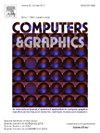基于测地热图的无分割框架鲁棒牙齿标记检测
IF 2.8
4区 计算机科学
Q2 COMPUTER SCIENCE, SOFTWARE ENGINEERING
引用次数: 0
摘要
牙齿标记自动检测是正畸治疗的重要组成部分,有助于牙齿形态评估、治疗计划和口腔健康监测。然而,由于不同的标记类型,不同的标记数量,解剖变异和牙齿异常,挑战仍然存在。为了解决这些问题,本文提出了一种鲁棒的两阶段框架,用于精确的地标检测。在第一阶段,自适应分割策略采用轻量级网络来预测牙齿质心,然后使用该质心将牙齿点划分为局部斑块,从而消除了精确分割的需要。在第二阶段,引入基于测地线距离的热图来提高地标检测精度。此外,提出了一种解剖学感知的空间增强策略来模拟临床具有挑战性的场景,从而提高模型的学习能力和鲁棒性,特别是在异常牙齿的情况下。在公共数据集上的大量实验结果证明了我们的方法的优越性,与最先进的方法相比有了显著的改进。本文章由计算机程序翻译,如有差异,请以英文原文为准。
Geodesic heatmap-based segmentation-free framework for robust tooth landmark detection
Automatic tooth landmark detection is a crucial component in orthodontic treatment, aiding in tooth morphology assessment, treatment planning, and oral health monitoring. However, challenges remain due to diverse landmark types, varying landmark quantities, anatomical variations, and dental abnormalities. To address these issues, this paper proposes a robust two-stage framework for precise landmark detection. In the first stage, an adaptive partitioning strategy employs a lightweight network to predict tooth centroids, which are then used to partition the dental points into localized patches, eliminating the need for precise segmentation. In the second stage, a geodesic distance-based heatmap is introduced to improve landmark detection accuracy. Furthermore, an anatomy-aware spatial augmentation strategy is proposed to simulate clinically challenging scenarios, thereby improving the model’s learning capability and its robustness, particularly in cases of abnormal teeth. Extensive experimental results on a public dataset demonstrate the superiority of our method, with significant improvements over state-of-the-art approaches.
求助全文
通过发布文献求助,成功后即可免费获取论文全文。
去求助
来源期刊

Computers & Graphics-Uk
工程技术-计算机:软件工程
CiteScore
5.30
自引率
12.00%
发文量
173
审稿时长
38 days
期刊介绍:
Computers & Graphics is dedicated to disseminate information on research and applications of computer graphics (CG) techniques. The journal encourages articles on:
1. Research and applications of interactive computer graphics. We are particularly interested in novel interaction techniques and applications of CG to problem domains.
2. State-of-the-art papers on late-breaking, cutting-edge research on CG.
3. Information on innovative uses of graphics principles and technologies.
4. Tutorial papers on both teaching CG principles and innovative uses of CG in education.
 求助内容:
求助内容: 应助结果提醒方式:
应助结果提醒方式:


